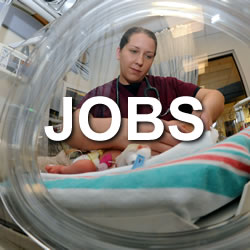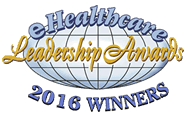Imaging
It was not that long ago that the only tools available to physicians to assist in the diagnosis of cardiovascular conditions were a stethoscope and a simple electrocardiogram - W.A. Zoghbi MD

image by: Health Imaging
HWN Recommends
Radiation from CT, other cardiac tests can be a problem
If you have a heart condition or concern, your doctor may discuss different ways to diagnose or monitor it, including an electrocardiogram (ECG), cardiac catheterization, echocardiogram (ultrasound), radionuclide stress test, coronary CT angiogram, radionuclide myocardial perfusion imaging, or cardiac magnetic resonance imaging (MRI). These tests provide valuable guidance in diagnosing and treating heart disease.
But some of them also expose you to ionizing radiation, which can potentially damage cells and increase the risk of cancer. Although no direct link between cardiac imaging tests and cancer has been confirmed, doctors are taking steps to limit the amount of radiation these…
Resources
 One More Heart Test to Consider: A Calcium Scan
One More Heart Test to Consider: A Calcium Scan
But measuring coronary calcium is not a surefire indication of a person’s risk. For one thing, the test measures arterial plaque that is hardened and firmly attached to the lining of coronary vessels. It does not measure the soft plaque that can rupture and travel through the coronary circulation until it reaches a narrowing it cannot pass, leading to a heart attack or stroke.
Radiation Dose in X-Ray and CT Exams
Following are comparisons of effective radiation dose with background radiation exposure for several radiological procedures described within this website:
Cardiovascular Imaging: A Glimpse Into The Future
The ability of current imaging modalities to reveal details of various cardiac structures and physiology has made them an essential component of training and practice of cardiovascular professionals. With new realities in health care emphasizing quality and cost-effectiveness, future technologies will need to demonstrate value through greater efficiency and efficacy of care and/or patient outcomes.
Imaging Centers: Useful or Harmful?
Imaging centers have proliferated in the past decade. You would think that the potential to develop cancer years or decades after an imaging procedure would ensure that imaging centers are as safe as possible. Think again!
Noninvasive Cardiac Imaging
Noninvasive cardiac imaging can be used for the diagnostic and prognostic assessment of patients with suspected or known coronary artery disease. It is central to the treatment of patients with myocardial infarction, coronary artery disease, or acute coronary syndromes with or without angina.
Why I’m Wary of Many Cardiac Screening Tests
We have been told for decades now that detecting cardiac disease early is better than waiting for symptoms to appear, which on the surface sounds reasonable. However, years of experience belies this supposed axiom, and in fact some screenings, in the guise of “early detection,” can be downright dangerous.
 Radiation from CT, other cardiac tests can be a problem
Radiation from CT, other cardiac tests can be a problem
Until 10 years ago, we didn't appreciate how much radiation exposure was incurred by certain tests. Now we know. Moreover, we understand that it's not only the dose that raises risk, but also when and where the radiation is given...
Angioplasty.org
Coronary angiogram, cardiac catheterization, ultrasound, thallium scan, stress echo, MultiSlice CT angiography, MRI, MRA... ...for the patient who has been having chest pains, one or more of these tests will be recommended to determine if coronary artery disease is the cause.
Cardiovascular Imaging
JACC: Cardiovascular Imaging provides readers with a broad, balanced view of all aspects of cardiovascular imaging. The Journal includes original clinical research on non-invasive and invasive imaging techniques including echocardiography, CT, CMR, nuclear, optical imaging, and cine-angiography. Advances...
European Heart Journal - Cardiovascular Imaging
European Heart Journal — Cardiovascular Imaging is a monthly international peer reviewed journal of the European Association of Echocardiography and is published in collaboration with the Working Groups of Cardiovascular Magnetic Resonance; and Nuclear Cardiology and Cardiology CT.
Radiology & Imaging
Physicians who subspecialize in cardiac imaging help diagnose and treat heart issues. These radiologists mainly use computed tomography (CT), nuclear medicine and magnetic resonance imaging (MRI) to produce special views of the heart.

Introducing Stitches!
Your Path to Meaningful Connections in the World of Health and Medicine
Connect, Collaborate, and Engage!
Coming Soon - Stitches, the innovative chat app from the creators of HWN. Join meaningful conversations on health and medical topics. Share text, images, and videos seamlessly. Connect directly within HWN's topic pages and articles.













